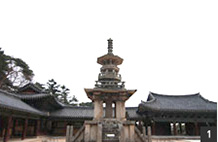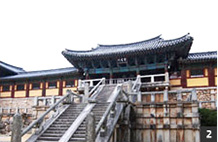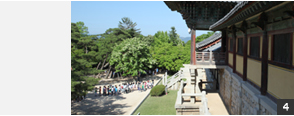





Heritage is a legacy inherited from our ancestors within which we dwell today, and which must be handed down to future generations. Both natural heritage and cultural heritage are sources of life and inspiration that are virtually irreplaceable.
The forms of heritage are unique and diverse. From the Serengeti plains of Tanzania in Africa to the pyramids of Egypt, from coral reefs of Australia to the baroque cathedrals of Latin America--all of these represent the heritage of humankind. The concept of ‘world heritage’ came into existence because such heritage, regardless of its location, embodies something of universal value to be shared by all humankind.
In order to identify, protect, and preserve natural or cultural heritage containing universal value for humankind, UNESCO adopted the Convention Concerning the Protection of the World Cultural and Natural Heritage (WHC for short) in 1972.
The forms of heritage are unique and diverse. From the Serengeti plains of Tanzania in Africa to the pyramids of Egypt, from coral reefs of Australia to the baroque cathedrals of Latin America--all of these represent the heritage of humankind. The concept of ‘world heritage’ came into existence because such heritage, regardless of its location, embodies something of universal value to be shared by all humankind.
In order to identify, protect, and preserve natural or cultural heritage containing universal value for humankind, UNESCO adopted the Convention Concerning the Protection of the World Cultural and Natural Heritage (WHC for short) in 1972.




| Classifications | Definitions |
|---|---|

|
Monuments
: Monuments, such as architectural works, works of monumental sculpture and painting, elements or structures of an archaeological nature, inscriptions, cave dwellings and combinations of features, which are of outstanding universal value from the point of view of history, art or science
Groups of buildings : Buildings such as groups of separate or connected buildings which, because of their architecture, their homogeneity or their place in the landscape, are of outstanding universal value from the point of view of history, art or science Sites : Heritage such as works of man or the combined works of nature and man, and areas including archaeological sites which are of outstanding universal value from the historical, aesthetic, ethnological or anthropological point of view |

|
Natural features consisting of physical and biological formations or groups of such formations, which are of outstanding universal value from the aesthetic or scientific point of view
Geological and physiographical formations and precisely delineated areas which constitute the habitat of threatened species of animals and plants of outstanding universal value from the point of view of science or conservation. Natural sites or precisely delineated natural areas of outstanding universal value from the point of view of science, conservation or natural beauty |

|
Properties having both natural and cultural importance |


This symbol is used to identify properties protected by the World Heritage Convention and inscribed on the official World Heritage List, and represents the universal values for which the Convention stands. Designed by Belgian artist Michel Olyff, it was adopted as the official emblem of the World Heritage Convention in 1978.
The central square symbolizes the results of human skill and inspiration, while the circle celebrates the gifts of nature. The emblem is round, like the world, a symbol of global protection for the heritage of all humankind.
The central square symbolizes the results of human skill and inspiration, while the circle celebrates the gifts of nature. The emblem is round, like the world, a symbol of global protection for the heritage of all humankind.

Presently, there are 890 world heritage properties in 148 countries, including 689 cultural, 176 natural, and 25 mixed properties. As of November 2009, 186 countries had signed the WHC (World Heritage Convention). As of that time, there were 31 properties on the List of World Heritage in Danger, including 16 cultural properties and 15 natural properties.










